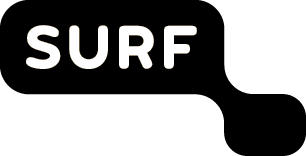Words: Jan Michielsen, SURF
In the Netherlands, students want more and more freedom to determine how they shape their educational career. eduID can help to realise this: it offers students a digital identity that they can use at any educational institution in the Netherlands, during and after their studies. What does SURF want to achieve with eduID, and where does the project stand? Peter Clijsters, eduID’s product manager, and Maarten Kremers, eduID’s technical product manager at SURF, explain.


Pictures by Sicco van Grieken. Left to right: Peter Clijsters; Maarten Kremers
To start with: what exactly is eduID?
Peter: In short, an eduID is a digital identity for students in Dutch education. An eduID does not belong to the institution where the students are enrolled, but to the students themselves. That makes an eduID much more widely deployable. With eduID, students are also given a privacy-friendly identity: they have control over what data educational institutions exchange about them, for example when they take courses at a partner institution.
How did you come up with the idea for eduID?
Peter: Students in the Netherlands increasingly want to study outside the institution where they are enrolled.
They want to compose their own study programme and wish to follow courses at several institutions, for example to increase their chances on the labour market. So, we are seeing greater student mobility.
Maarten: Institutions usually offer the option for students to take courses at other institutions, but this is often
accompanied by messy and opaque administrative processes. To really make this student mobility possible, a new concept was needed. A few years ago, we were involved in the GÉANT project eduKEEP, which already focused on a student-bound identity. In this project, we researched the possibilities with SWITCH and GARR, among others. And more recently in the Netherlands we looked at various existing identities outside the field of education, such as iDIN (from the banks) and DigiD (from the Dutch government). But these turned out to be of no use to us: we really needed an identity specifically for education. So, we set to work ourselves.
What does SURF want to use the eduID for?
Peter: We already mentioned student mobility: following courses outside your own institution becomes a lot easier if you can be uniquely identified with your personal eduID by all educational institutions. Another application is life-long development: students want to continue to develop themselves after graduation. And employers also want them to do so now that the labour market is becoming more flexible. As students keep their eduIDs after their studies, they can also use it if they obtain extra certificates. Good examples are lawyers or doctors who need to keep up with their professional knowledge.
What experience has SURF already gained with eduID?
Maarten: Last year, we carried out a first important pilot with microcredentialing: students can obtain socalled edubadges for completed courses that are linked to them via their eduIDs. Through their eduIDs, they can always
show that they have obtained these credentials and thus create a digital portfolio.
Peter: We have now started a second major pilot, on student mobility. A number of universities are working
together on this. They make it possible for students to register for courses at one of the other participating universities with just one click. We use eduID to uniquely identify students and to streamline privacy-friendly data exchange. This should make the enrolment process a lot easier, for both the institution and the student.
Can eduID also be used outside the Netherlands?
Maarten: We are developing eduID specifically for Dutch education because that has its own characteristics. But
we do exchange knowledge with other NRENs that are interested, and where possible we work together. And of
course we keep an eye on developments in projects such as MyAcademicID, in which GÉANT is involved. Perhaps we can join in at a later stage.
What challenges do you still see?
Maarten: The implementation of eduID is not an isolated process; it is always part of a larger use case, for example studying across institutions. So, we cannot say to an institution: “Look, we’ve set up eduID for you, good luck with it.” The challenge is to think about the larger end goal in which eduID is a cog.
Peter: Another challenge is the large number of stakeholders: our affiliated institutions, but also, for example,
the Ministry of Education, Culture and Science. Together, they have to determine what form the flexibilisation
of education will take, which includes student mobility, in the coming years. We are already developing eduID, which in fact anticipates national developments. So, we do not yet know what the concrete use cases will be in this area.
Want to know more about eduID and the pilots? Please visit www.surf.nl/en/eduid







